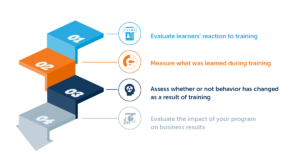Introduction.
What are 5 examples of tools? Choosing the right project management tools is critical for businesses to streamline workflows, enhance collaboration, and meet project deadlines. However, selecting inappropriate tools can lead to inefficiencies, miscommunication, and project delays. This guide breaks down the problem of tool selection, identifies common causes of poor choices, outlines consequences, and provides a step-by-step solution with real-world examples and preventive strategies.
Breaking Down the Problem.
Selecting the wrong project management tools can disrupt team productivity and project outcomes. The problem can be broken into smaller components:
-
Identifying Needs: Teams often fail to align tools with specific project requirements (e.g., task tracking, time management, or resource allocation).
-
Evaluating Features: Overlooking key features like scalability, integration, or ease of use.
-
User Adoption: Tools may be too complex, leading to resistance from team members.
-
Cost vs. Value: Choosing tools that are either too expensive or lack essential functionality.
-
Implementation and Training: Poor onboarding processes hinder effective tool use.
Common Causes.
-
Lack of Clear Requirements: Teams select tools without defining project goals or team needs.
-
Insufficient Research: Relying on popularity or marketing rather than functionality.
-
Ignoring User Feedback: Not involving end-users in the selection process.
-
Budget Constraints: Opting for free tools that lack critical features.
-
Poor Training: Failing to provide adequate training or support for tool adoption.
Consequences of Not Addressing the Issue.
Failing to select appropriate project management tools can lead to:
-
Project Delays: Misaligned tools cause missed deadlines due to poor task tracking.
-
Team Frustration: Complex or unsuitable tools reduce morale and productivity.
-
Budget Overruns: Inefficient workflows increase costs or require additional tools.
-
Data Silos: Lack of integration leads to fragmented communication and data.
-
Client Dissatisfaction: Delays and errors harm client relationships and reputation.
Step-by-Step Solution:
Below is a detailed, actionable guide to selecting and implementing the right project management tools.
Step 1: Define Project and Team Needs.
-
Action: Conduct a needs assessment with stakeholders to identify project goals, team size, and required features (e.g., task management, time tracking, reporting).
-
Tools/Resources: Use surveys or workshops to gather input. Tools like Google Forms or Miro can facilitate collaboration.
-
Example: A marketing agency identifies the need for a tool to manage campaign timelines, track budgets, and integrate with their CRM.
Step 2: Research and Shortlist Tools.
-
Action: Research tools based on defined needs. Focus on features, scalability, integrations, and user reviews. Shortlist 3–5 tools for comparison.
-
Tools/Resources: Websites like Capterra, G2, or Software Advice provide reviews and comparisons. Example tools include:
-
Trello: Best for visual task management with Kanban boards.
-
Asana: Ideal for complex workflows and team collaboration.
-
Monday.com: Flexible for customization and integrations.
-
ClickUp: All-in-one solution with robust features.
-
Jira: Suited for software development with agile methodologies.
-
-
Example: The agency shortlists Asana, Monday.com, and Trello based on CRM integration and ease of use.
Step 3: Evaluate Tools with Trials.

-
Action: Test shortlisted tools using free trials or demos. Involve team members to assess usability and functionality.
-
Tools/Resources: Most tools offer 14–30 day free trials. Create a scorecard to rate tools on criteria like ease of use, features, and cost.
-
Example: The agency tests Asana’s task assignment and Monday.com’s reporting during a 14-day trial, involving team feedback.
Step 4: Assess Cost and Scalability.
-
Action: Compare pricing plans against budget and future growth needs. Ensure the tool supports additional users or features as the team scales.
-
Tools/Resources: Check vendor pricing pages (e.g., Asana’s plans range from free to premium tiers). Use a cost-benefit analysis template.
-
Example: The agency chooses Asana’s Business plan ($24.99/user/month) for its scalability over Trello’s free tier, which lacks advanced reporting.
Step 5: Implement and Train.
-
Action: Roll out the selected tool with a clear onboarding plan. Provide training sessions, tutorials, and documentation to ensure adoption.
-
Tools/Resources: Use vendor-provided resources (e.g., Asana Academy) or create custom guides. Tools like Loom can record training videos.
-
Example: The agency hosts a workshop to train staff on Asana, creates a shared project template, and assigns a tool champion to answer questions.
Step 6: Monitor and Optimize.
-
Action: Regularly collect feedback and monitor tool usage to identify issues. Adjust workflows or switch tools if needed.
-
Tools/Resources: Use analytics within the tool (e.g., Monday.com’s dashboards) or survey tools like SurveyMonkey.
-
Example: After three months, the agency reviews Asana usage, finding that 90% of tasks are completed on time, but adds custom fields to improve reporting.
Real-World Case Study.
Case: A mid-sized software development firm struggled with delayed projects due to poor task visibility using spreadsheets. They followed the above steps:
-
Needs Assessment: Identified needs for agile task tracking and GitHub integration.
-
Research: Shortlisted Jira, ClickUp, and Trello.
-
Evaluation: Tested Jira’s agile boards and found it intuitive for developers.
-
Implementation: Trained the team using Jira’s tutorials and integrated it with GitHub.
-
Outcome: Project completion rates improved by 30%, and team satisfaction increased due to streamlined workflows.
Preventing Future Issues.
-
Regular Reviews: Reassess tools annually to ensure they meet evolving needs.
-
User Involvement: Involve end-users in future tool selections to boost adoption.
-
Stay Updated: Monitor vendor updates for new features or integrations.
-
Budget Planning: Allocate funds for premium plans to avoid feature limitations.
-
Continuous Training: Offer refresher training to maintain proficiency.
Next Steps and Call to Action.
-
Start Today: Conduct a needs assessment with your team this week.
-
Research Tools: Explore platforms like Capterra to shortlist tools.
-
Test and Implement: Sign up for free trials and involve your team in testing.
-
Act Now: Don’t let inefficiencies delay your projects. Choose the right tool to boost productivity and meet your goals.
By following this guide, you can select and implement project management tools that align with your team’s needs, ensuring smoother projects and happier teams. Take the first step today!
